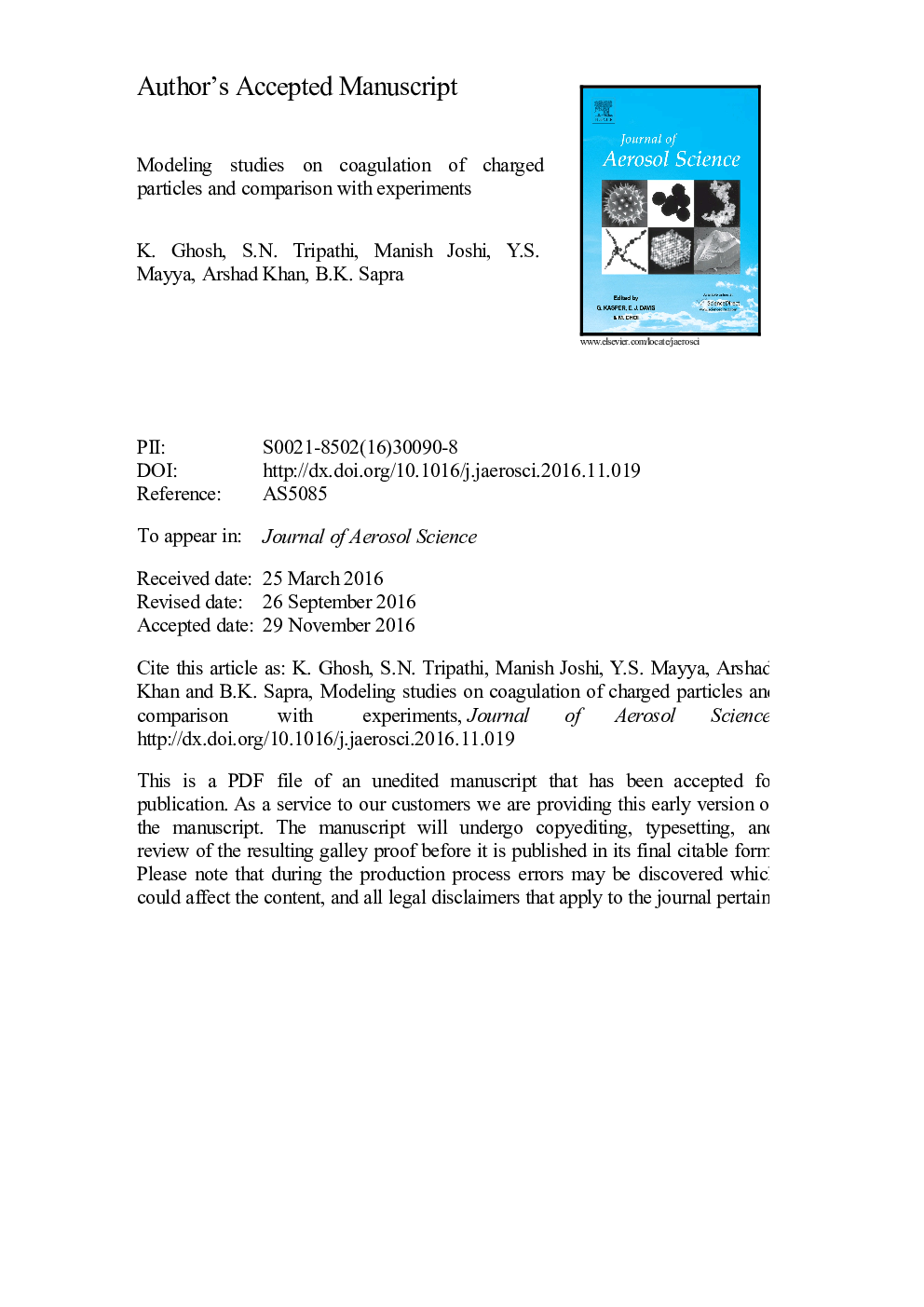| Article ID | Journal | Published Year | Pages | File Type |
|---|---|---|---|---|
| 5753956 | Journal of Aerosol Science | 2017 | 23 Pages |
Abstract
A generalized formulation for coagulation of charged particles is presented in this paper. The governing equations can be solved semi-implicitly for a number of discrete size and charge bins. The computationally efficient mechanism gives volume and charge conserved solution with time. A distinct way of handling electrostatic dispersion in dynamic model has been used in this work. The scheme has been tested for charged, nebulized aerosol particles by model studies and also compared with experimental observations. The model simulated results show that charge can significantly affect the coagulation dynamics if charge level is higher than the Boltzmann equilibrium charge limit for less than 1 μm particles. It was found that for the bipolar charge case, there was a significant effect on the enhancement of the coagulation process. For the case of unipolar charge, electrostatic dispersion was seen to play a role in the depletion of number concentration. The model was then validated against results of six controlled experiments in which electrical low pressure impactor (ELPI) was used for measurement of charge and number size distribution. Our model results were found to be in reasonable agreement with observed values. The developed model is fast (independent of time step) and numerically stable. It can be used for several applications involving coagulation dynamics of charged aerosol particles.
Related Topics
Physical Sciences and Engineering
Earth and Planetary Sciences
Atmospheric Science
Authors
K. Ghosh, S.N. Tripathi, Manish Joshi, Y.S. Mayya, Arshad Khan, B.K. Sapra,
